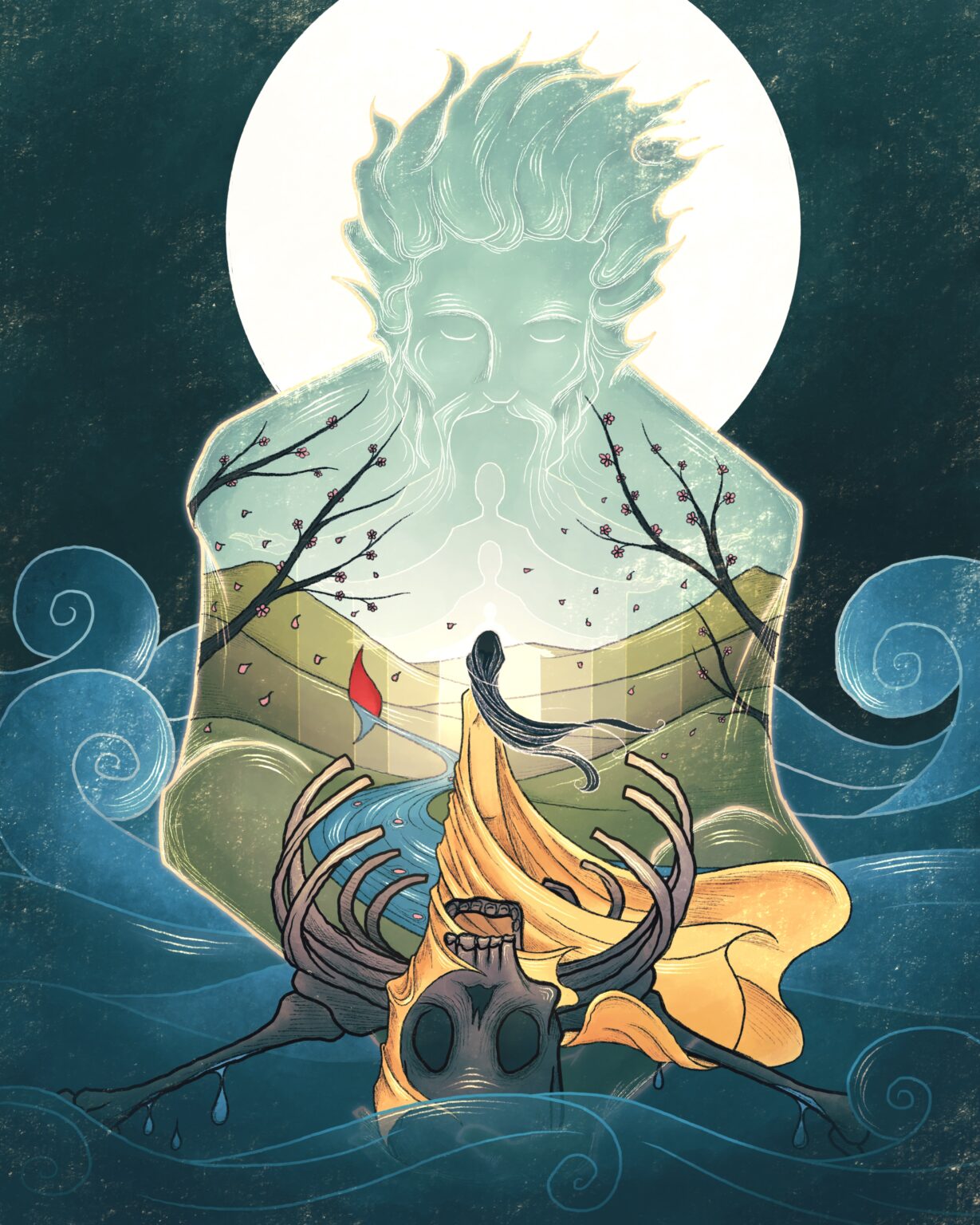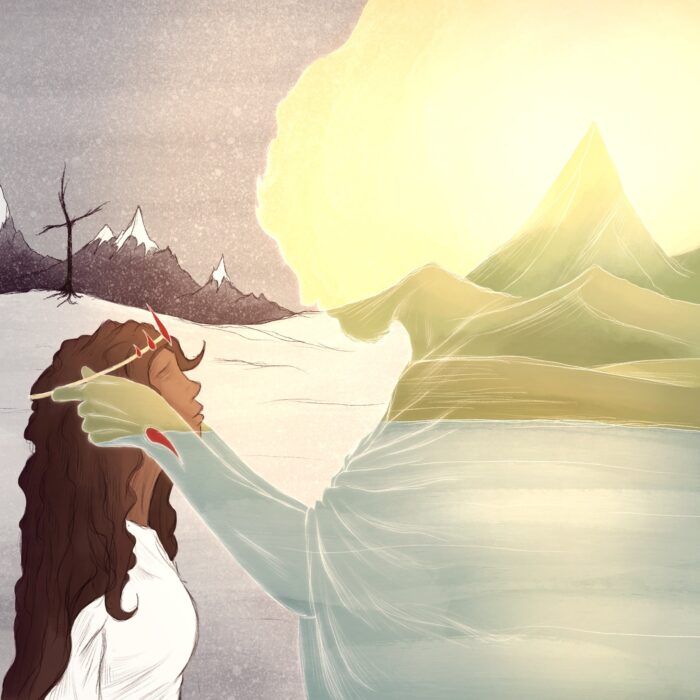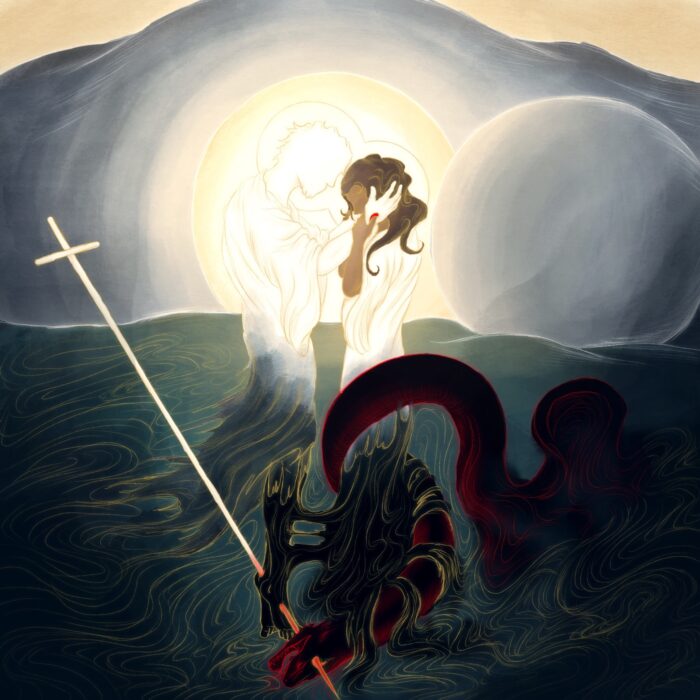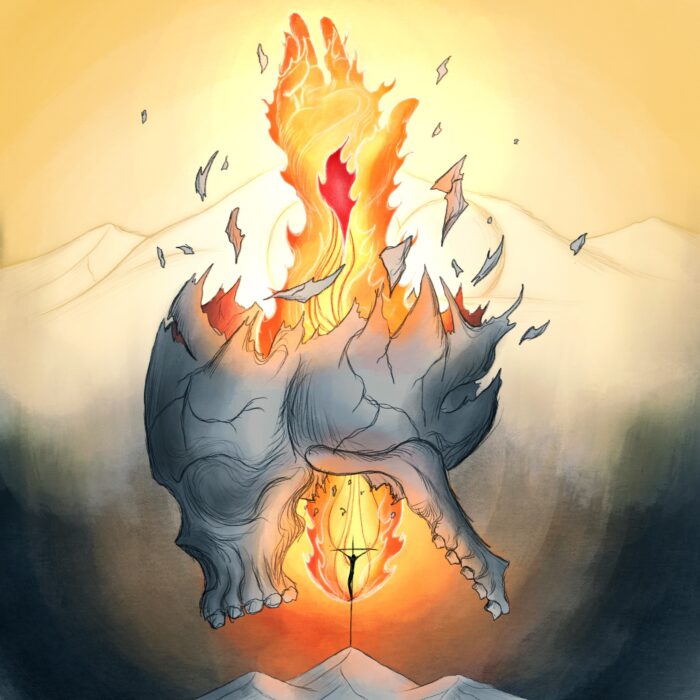Song of Songs 2:10, “Arise, my love, my beautiful one, and come away…”
The word for “arise” here in the Greek OT is “ἀνίστημι”—the same word translated “resurrection.” We may, thus, read this call to “Arise” as the call of the Risen Christ to His Bride, gathering her up from the dust of death and the Winter of cursed mortality into the everlasting Spring of His own resurrection life. But there’s something more to see here.
Notice that the whole point of ‘arising’ in this text is so that the bride might “come away” with the bridegroom. In other words, resurrection is *for the sake of* relationship. Resurrection here is not finally about the defeat of death, but about LOVE. The victory over death is a side effect of greater reality, namely, the Beloved’s entry—beyond and against all expectation—into LOVE. “Arise…and *come away.*”
Indeed, we might even say that, in this text, Resurrection is itself nothing other than the sovereign persistence of Love’s love for the Beloved—Love’s almighty decree that the Beloved should *BE.*
Resurrection simply is love—that is, Love’s love for the Beloved, the love that demands the existence of the Beloved, the love that embraces the Beloved and so will not and cannot allow for the dissolution of the Beloved—resurrection is this love made sovereignly manifest in the space and time of this mortal world. It is Love’s command that the Beloved One MUST live.
[[Side Note / This is the demand of all love, even our broken and shadowed experience of it as human. This too is the agony of all death. Is not the call, “Arise, my love, my beautiful one, and come away” when *unanswered*—somehow unbelievable to the human soul even in this world of death—the heart of all sorrow? / End Note]]
If God is LOVE, then—in all creations, in all times and places, in all “possible worlds”—the Beloved MUST finally live (cf. Matt. 22:32). This is supremely actualized within time and space with the Resurrection of *THE* Beloved One, Jesus Christ. It will be secondarily actualized with the resurrection of all those in Him on the last day—and all the cosmos with them.
In Today’s picture, Love is portrayed in the figure of the slain and risen Jesus, in whom God is known as Love (1 Jn 4:8-10). One of the great wonders of the Gospel is that, in the freedom of His Love, God has set the Love that He is upon the utterly undeserving. This is pictured in Christ’s holding of the skeletal body of His Bride. He raises her up from the dark waters, picturing the call to ‘arise, my love’ as both resurrection and baptism (which are ultimately the same reality).
But as we’ve seen in today’s text, He does not merely raise her to life, but to love—that is to say, *into relationship with Himself.* I’ve pictured this by showing the Bride’s resurrection as taking place *within* Christ. She stands in the midst of the Springtime of the New Creation—regenerated from the dust of her damned self—robed in blood-washed white. The river of living water flowing from Christ’s side—the river who is the Spirit of God and delight of His own life (Jn 7:37-39, Ps.36:8)—is the Life of her new life (19:34, Rev.22:1).
Perhaps most significantly, I’ve pictured a luminous, infinitely receding silhouette of Christ Himself before the Bride. The idea here is that the “Life” of the Bride’s risen existence is nothing other than her continually journey further up and further in to the single note of Love struck on Calvary as it reverberates through every instance of eternity and every molecule of the cosmos in the flesh and blood of the slain and risen Lord. Resurrection is from, for, and unto *this Love.*




